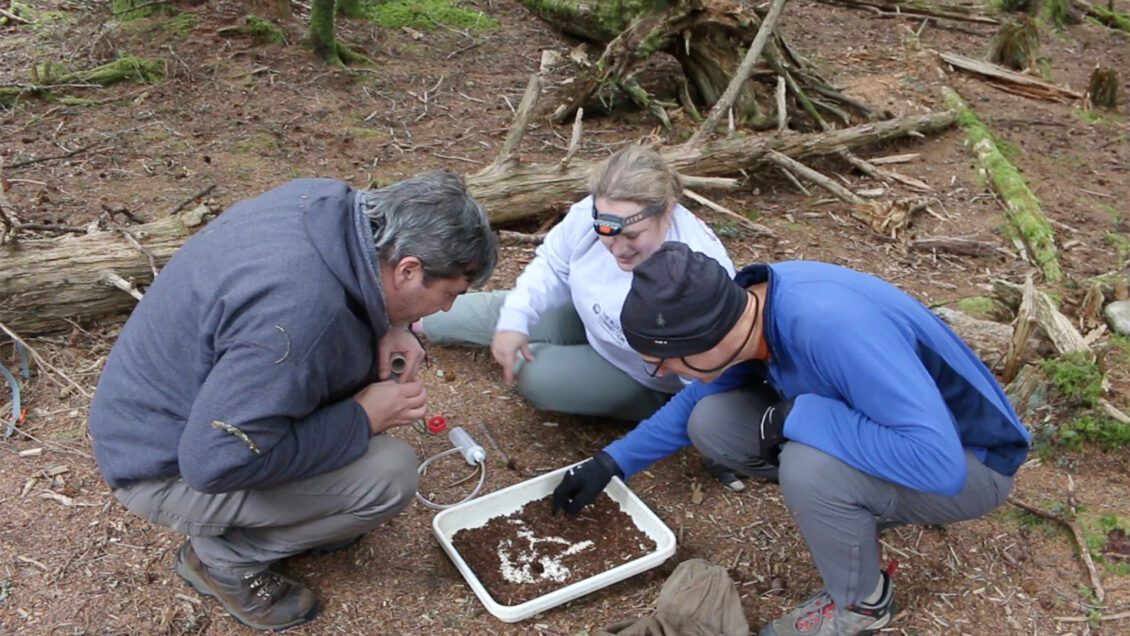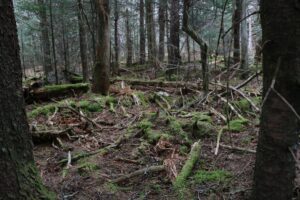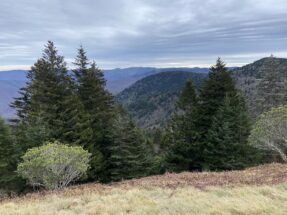
This study allows us to fill in knowledge gaps for arthropods living in these forests so that federal and state land managers can determine what programs should be implemented to conserve their populations.
Michael Caterino, Clemson University entomologist
To protect some of the oldest inhabitants of the Appalachian Mountains, Clemson scientists are exploring the diversity of high-elevation arthropods at risk from climate change affecting the forests these creatures call home.
The team, led by Clemson University entomologist Michael Caterino, is studying tiny arthropods – insects, millipedes and their relatives – that live in leaf litter on mountaintops in the Appalachians. Clemson post-doc Ernesto Recuero and doctoral students Patricia Wooden and Adam Haberski are also involved in the study, which began in July 2019.

As of November 2023, they had discovered that nearly 1,000 species, dozens of which had never been seen before, call these mountains home.
“There is a lot of unknown diversity in the arthropod world,” said Caterino, the John and Suzanne Morse Endowed Chair of Arthropod Biodiversity. “Many of these arthropods can’t fly and are confined to spruce-fir forests, which face numerous threats. A lack of information about native species diversity hinders their conservation.”
The scientists are studying arthropods at 22 of the highest points in the southern Appalachian Mountains. By sorting leaf litter and documenting arthropods found, they can determine species diversity and uniqueness to highlight their role in ecosystem health.
“We need to know what’s there and what is required to protect them for as long as we can,” Caterino said. “This study allows us to fill in knowledge gaps for arthropods living in these forests so that federal and state land managers can determine what programs should be implemented to conserve their populations.”
Arthropods help the ecosystem by decomposing organic matter, maintaining soil structure and fertility, assisting in plant reproduction, and helping regulate populations of other organisms.
“People often think of arthropods as being insignificant because most are so small,” Caterino said. “But there are hundreds of species just living in the leaf litter here in the Appalachians and billions of individuals, so, collectively, these small creatures can have a huge impact on our ecosystem.”
In the southern Appalachian Mountains, the highest elevations, above 1,500 m (5,000 ft), reveal a sky-island forest community dominated by red spruce and Fraser fir. These forests are different from the predominantly deciduous broadleaf forests of lower elevations. The higher elevations allow for cooler, moister environmental conditions not found anywhere else in the southeastern United States.

But climate change is producing warmer temperatures, threatening these forests that are home to many arthropod species. Understanding the diversity and ecological roles of arthropod communities is crucial to preserving the ecosystem.
Caterino and his team believe more work needs to be done to help guide management efforts of arthropods in the Appalachian Mountains.
“This study has greatly expanded the scope of work in the southern Appalachians, strongly supporting the belief that genetic uniqueness of these communities would be high,” Caterino said. “Along with other species of concern, such as the endangered spruce-fir moss spider, the litter community as a whole should be considered highly restricted and worthy of focused protection.”
Most of these arthropods and their ancestors have lived in the Appalachian Mountain forests for millions of years. For more information, read Shedding light on dark taxa in sky-island Appalachian leaf litter. Project-related information is also available on The Caterino Arthropod Biodiversity Lab website.
-END-
This material is based upon work supported by the National Science Foundation under Grant No. 1916263. Any opinions, findings, conclusions or recommendations expressed in this material are those of the author(s) and do not necessarily reflect the views of the National Science Foundation.
Get in touch and we will connect you with the author or another expert.
Or email us at news@clemson.edu
